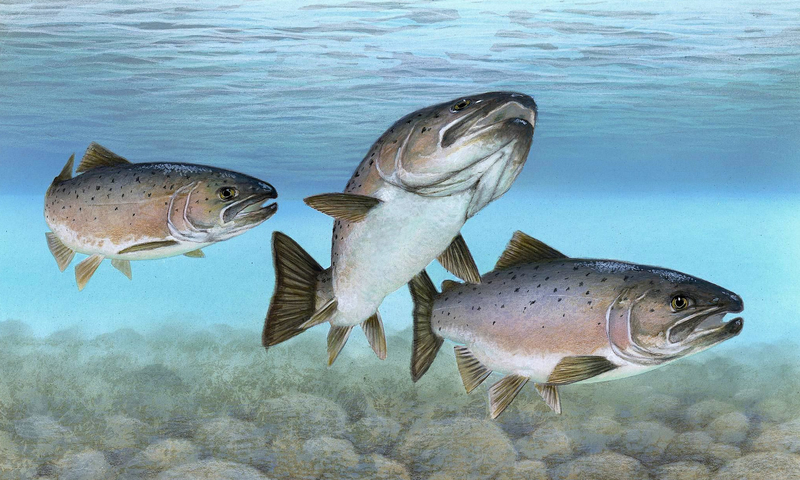
For the vast majority of salmon, the trip upriver to spawn is a suicide mission. The fish expend nearly every ounce of energy they have fighting currents, leaping up waterfalls, and dodging predators. Their bodies change—they absorb parts of their skeleton and parts of their skull, using the calcium to fuel the trip. Males grow a hook on their lower lip. In most cases, after they’ve laid and fertilized their eggs, the salmon die.
Occasionally, salmon will survive and go on to spawn again—and again, and again.
LINK (via: Hakai Magazine)






Kelts were numerous during the February and early March starts of the season on many British salmon rivers when I first started salmon fishing as a boy in the mid 1960s and continued to be on some rivers so well into the 1980s.
Kelts were critters that stopped your fly or spoon (and heart) with a rod-wrenching take on a freezing, fishless late-winter (so-called “spring”) day in March, when the line was freezing in your rod guides and so was the drip on your nose. But then in they’d come – with little fight, ghostly tin-plate silver and white, snake-thin and with a set of the sharp teeth they were looking to use in the sea once they got the hell of the river in which they had spawned several weeks earlier. A few of these fish were huge – I remember seeing a fish that must have been a forty-plus-pounder three months earlier, now it weighed just late teens or early twenties of pounds and looked as if it had gone all 15 rounds with Mike Tyson but was still standing and was hell-bent on getting back to the ocean feeding grounds.
Kelts were something an angler cursed on hooking, but still put back alive, because killing a kelt was a No-No enshrined in both salmon-fishing lore and etiquette and by actual law, both local and national. Besides, as the old riverside farmers knew, Kelts were things only worth feeding to their pigs or sheepdogs.
Many a British salmon-fisher nowadays would love to see those early-season “nuisance” Kelts again, for, back in the last salmon-rich 1960s to mid-late ’80s days, they were the sure, still-living sign that good numbers of fish had been up the river and spawning during the early October to February or March no-fishing close season and a season’s start promise of future years fresh-run fish to come.
I have a photo of a fish somewhere in my papers, a mid 1970s “snap” that I took on a cheap, 1960s boyhood Kodak camera, of a very accomplished River Wye salmon-fisher and friend, he nearly 40 years my senior, with a great, blue-lilac-black-and-silver fresh-run (no kelt, this one) 38-pound “springer” (not his largest from that river in many years of fishing it; he had had two bigger).
Several months later he sent me a postcard, to tell me that he had had a scale-reading done on the fish I had never netted for him when were fishing together that spring – it had spent four years in the river – as winter-laid ova, newly hatched alevin, tiny fry and eat-anything little parr – before migrating to sea as a hardly larger, inches-long silver smolt, then returned to the river TWICE as an adult to spawn, only to get caught by my pal on its (her) nothing less than heroic third visit.
Some fish. Generations of salmon-fishers dreamt about and spoke in awed tones among themselves about such fish. We badly need to see a lot more of them!
Pedant’s Edit:
“….. on the fish I had NERVOUSLY netted for him…….”
Still a bit shaky at the memory of such fish.
Signs off.